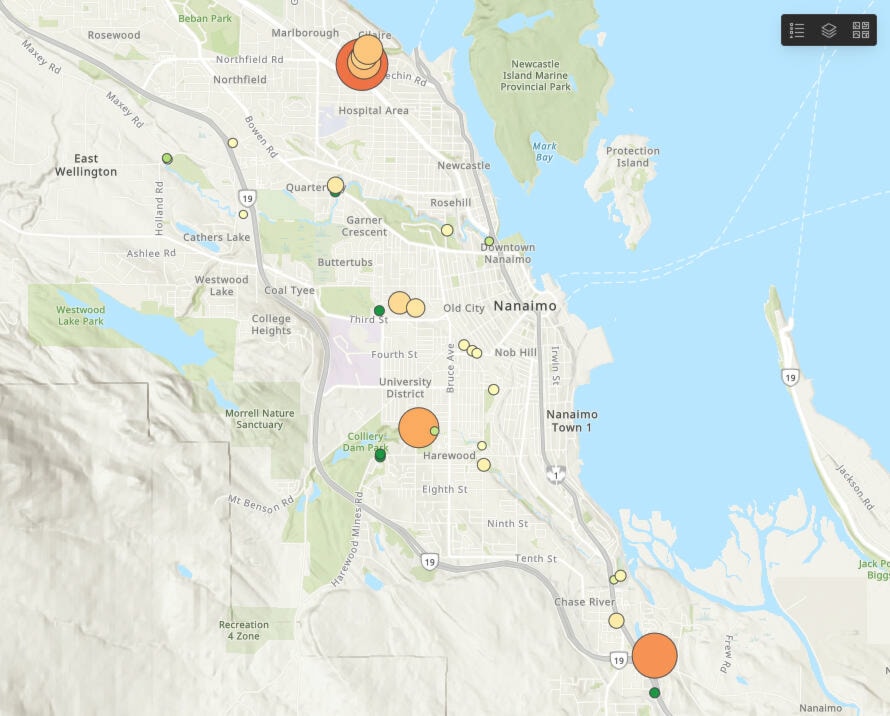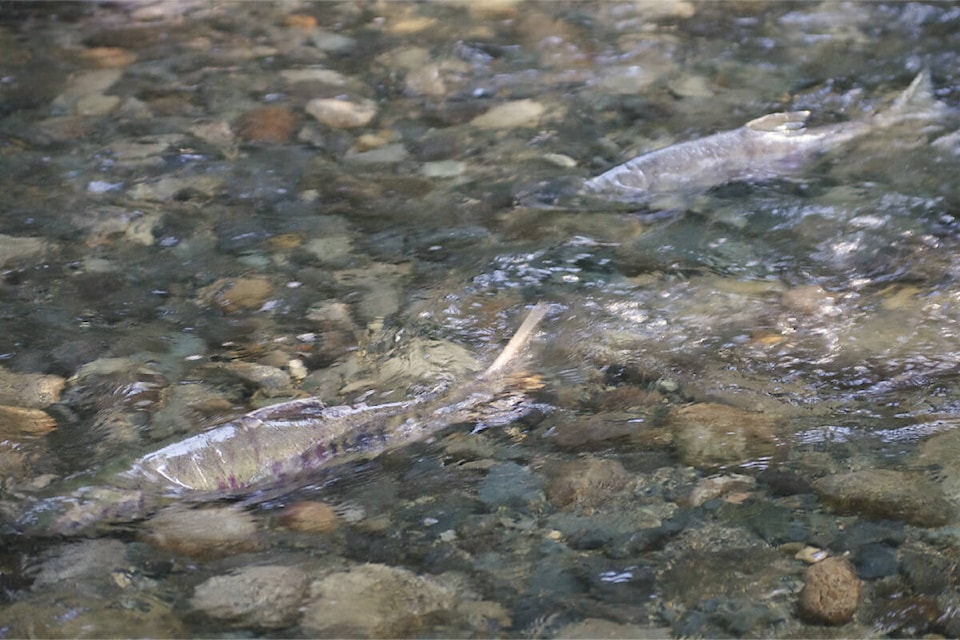One might think rainfall would be a blessing for the salmon population, but over the past number of years it’s become deadly with road runoff draining toxic chemicals into the water.
6PPD-quinone is a chemical used to prevent tires from breaking down – it’s also fatal for coho salmon following exposures lasting only hours according to the U.S. Environmental Protection Agency.
Now, high traces of the chemical are turning up in Victoria and Nanaimo waterways.
The B.C. Conservation Foundation and Vancouver Island University began a three-year study in October, looking at the prevalence of 6PPD-quinone in eastern Vancouver Island’s freshwater waterways.
So far, the chemical was detected in about 660 samples, or 33 per cent. Of those, 100 were at levels above what is considered a lethal limit for juvenile coho salmon and 50 were above the adult limit.
READ MORE: Environmental detectives solve mystery of dead salmon in B.C. creek
The waterway with the highest chemical counts in Nanaimo came from Northfield Creek, near the intersection of Departure Bay and Estevan roads. Other high concentrations include Chase River near Howard Avenue and Beck Creek by Cedar Road.
The lethal concentration resulting in 50 per cent mortality in juvenile coho salmon is 41 nanograms per litre while the lethal concentration for 50 per cent mortality for older coho is higher at 80-95ng/L.
At Northfield Creek, samples ran as high as 138ng/L. At Beck Creek, the daily mean with the highest concentration was 94ng/L. At Chase River, it tested 108ng/L.
Erik Krogh, co-director of the applied environmental research laboratories at Vancouver Island University said the data has three interesting aspects. The first is that the concentrations are not evenly spread out across all streams and intersections equally, the second is the same streams can have lower and higher concentrations over the run of the river. The third is that concentrations change rapidly – in some cases even within minutes.
“If you have a rain event, especially in the fall after a long, dry period, the concentrations go up quite quickly and then go through a peak and go back down after that rain event slows down and stops,” Krogh said. “Understanding how the concentrations change over time is also really important for us to design a treatment system that can handle those kinds of high flows.”
The team anticipates the highest concentrations will continue to be found in areas with lower stream flows and high traffic.
“Small urban streams near busy roads are usually where these hot spots were, and some salmonids … like coho which are particularly sensitive to tire wear toxin, actually spawn in these smaller streams, so it’s important to understand and protect those streams.”

Last March, high 6PPD-quinone levels were blamed by the Millard Piercy Watershed Stewards for mass coho salmon deaths in 2021 at Courtenay’s Piercy Creek.
Krogh said the Island has experienced several coho salmon die-off events over the past number of years that match exposure to 6PPD-quinone, though the testing wasn’t done to confirm.
“In the state of Washington where they have been working on this for a few more years than we have there is certainly evidence that it has resulted in urban runoff mortality events where right after a rain, particularly in the fall where they have these large die-offs in certain impacted river and creek systems,” he said.
Ed Kolodziej from the University of Washington researches water quality and contaminant fate in natural and engineered systems. He said the most contaminated areas in the United States appear to have higher concentrations of 6PPD-quinone, but some locations in both countries need mitigation measures.
“For decades people have seen, especially adult, coho salmon dying after rainstorms throughout our greater Seattle region. We definitely know those rainstorms are pretty tricky when they generate a lot of stormwater, a lot of road runoff hits the creek. Washington State and the EPA are spending a lot of time to try to fix that problem,” Kolodziej said, adding that in the state’s most impacted locations, up to 90 per cent of the returning coho salmon can die from stormwater exposure.
“It’s clear Nanaimo has busy roads and coho salmon and small creeks too. If you put busy roads and small creeks and coho salmon together it’s generally not good for the coho salmon, regardless of where you are.”
To mitigate the harm in Washington, Kolodziej said the state is installing new runoff treatment at prioritized locations in salmon spawning and rearing habitats, as well as working with tire manufacturers to find an alternative.
According to Krogh, one measure being implemented on Vancouver Island is retention ponds, which hold the water from the runoff, giving it a chance to settle as well as slow down the pulse of water going into the stream or creek.
“We’re already working with a number of community groups that involve the City of Nanaimo representatives who are working on installing them and deciding where to install some of these green infrastructure programs,” Krogh said. “They’re definitely interested but they can’t put them everywhere so we have to decide where are the priority locations where those green infrastructures can be put into existence.”
For those who want to help, Krogh said that residents can collect water samples in their own neighbourhoods to submit for testing through the Tire Wear Project. The team can be reached at htomlin@bccf.com.
